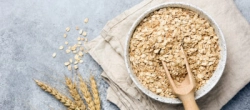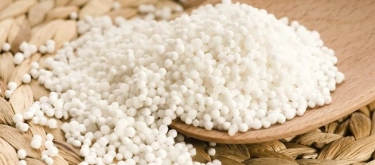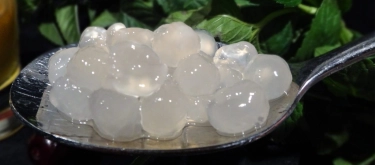Chickpea: Taste, Uses, Benefits and Harm
Chickpea (Cicer arietinum), also known as garbanzo bean, is one of the oldest cultivated legumes, originating from the Middle East around 7,000 years ago. It is a staple in Mediterranean, Indian, and Middle Eastern cuisines, valued for its nutty flavor, creamy texture, and rich nutritional profile. Chickpeas are consumed whole, ground into flour, or processed into hummus and falafel.
Chickpeas are generally safe but may cause allergic reactions in individuals sensitive to legumes. They contain complex carbohydrates that can cause bloating and gas in people with digestive sensitivities. Not recommended in excess for individuals with gout due to purine content. Pregnant women can safely consume chickpeas in moderate amounts as part of a balanced diet.

Complete Sensory Description
-
Taste: Mildly nutty, earthy, and slightly buttery, with a subtle sweetness when cooked. Raw or undercooked chickpeas taste grassy and bitter.
-
Aroma: Neutral when cooked; raw or soaked beans smell earthy and slightly beany. Roasted chickpeas develop a toasty, nutty aroma.
-
Texture: Firm and starchy when raw; soft, creamy, and dense when boiled or stewed. Roasted chickpeas are crunchy.
-
Appearance: Small, round legumes with a beige, tan, or light brown color. Some varieties are black, green, or red.
In-depth Flavor Analysis
Chickpeas contain starch, proteins, and lipids that influence their taste. Their nutty flavor arises from pyrazines and aldehydes formed during cooking. The earthy notes are due to geosmin and other soil-derived compounds.
-
Boiled chickpeas: mild, starchy, creamy.
-
Roasted chickpeas: caramelization produces nutty and toasty notes.
-
Fermented products (like miso with chickpeas): enhanced umami and tangy flavor.
The balance of starch and protein gives chickpeas their dense, satisfying mouthfeel, making them versatile in savory and sweet dishes.
Varieties and Culinary Applications
-
Kabuli chickpeas: large, beige, smooth; common in Mediterranean dishes.
-
Desi chickpeas: smaller, darker, with rougher coat; common in India and used for flour (besan).
-
Green chickpeas: fresh, unripe beans with grassy sweetness.
Culinary uses:
-
Middle Eastern: hummus, falafel, salads.
-
Indian: curries, chana masala, flour for pakoras and sweets.
-
Mediterranean: stews, couscous dishes, roasted snacks.
-
Western: soups, veggie burgers, gluten-free baking with chickpea flour.
Selection and Storage
-
Selection: Dried chickpeas should be uniform, without cracks or discoloration. Canned chickpeas should be free from swelling or rust on the can.
-
Storage: Store dried chickpeas in a cool, dry place for up to 12 months. Cooked chickpeas keep 3–4 days refrigerated, or can be frozen for months.

Nutritional Insights
-
Rich in plant protein and dietary fiber, supporting satiety and digestive health.
-
Excellent source of iron, folate, and magnesium.
-
Contains resistant starch, which supports gut microbiota.
-
Regular consumption may improve blood sugar control and support heart health.
Expert Insights & Culinary Tips
-
Soak dried chickpeas overnight to reduce cooking time and improve digestibility.
-
Add baking soda to soaking water to soften skins.
-
Roast chickpeas with spices for a high-protein snack.
-
Use aquafaba (the liquid from canned chickpeas) as an egg substitute in vegan baking.
-
Pair chickpeas with grains (like rice or couscous) to form complete proteins.
Interesting and Curious Facts
-
Chickpeas were cultivated as early as 7,000 BCE in the Fertile Crescent.
-
Ancient Greeks and Romans considered them both food and medicine.
-
In India, chickpea flour (besan) is a staple in sweets and fried snacks.
-
Aquafaba, once considered waste, is now a key vegan ingredient.
Harm and Dietary Considerations
-
May cause bloating and gas due to oligosaccharides.
-
Not suitable in large amounts for individuals with gout (purines).
-
Raw chickpeas should not be eaten — they contain lectins that are neutralized only by cooking.
-
Excessive intake may interfere with mineral absorption due to phytates.
Religious Dietary Considerations
Chickpeas are acceptable in all major religions. They hold particular importance in vegetarian Hindu and Buddhist diets, are common in Middle Eastern Islamic cuisines, and are integral to Jewish dishes like hamin. No restrictions apply in Christianity.
Final Thoughts & Sensory Journey
Chickpeas combine nutty, earthy flavor with a creamy texture, making them one of the most versatile legumes. From hummus to curries, their mild yet satisfying taste adapts seamlessly to countless cuisines while providing significant health benefits.
Resources
-
Harold McGee, On Food and Cooking: The Science and Lore of the Kitchen. Scribner, 2004. ISBN 978-0684843285
-
Ken Albala, Beans: A History. Berg Publishers, 2007. ISBN 978-1845204303
-
Jukanti, A. K. et al., “Nutritional Quality and Health Benefits of Chickpea (Cicer arietinum L.).” British Journal of Nutrition, 2012. DOI: 10.1017/S0007114512000797
-
S. H. Nasar-Abbas & F. Platel, Chickpea Breeding and Management. CAB International, 2014. ISBN 978-1780648368







